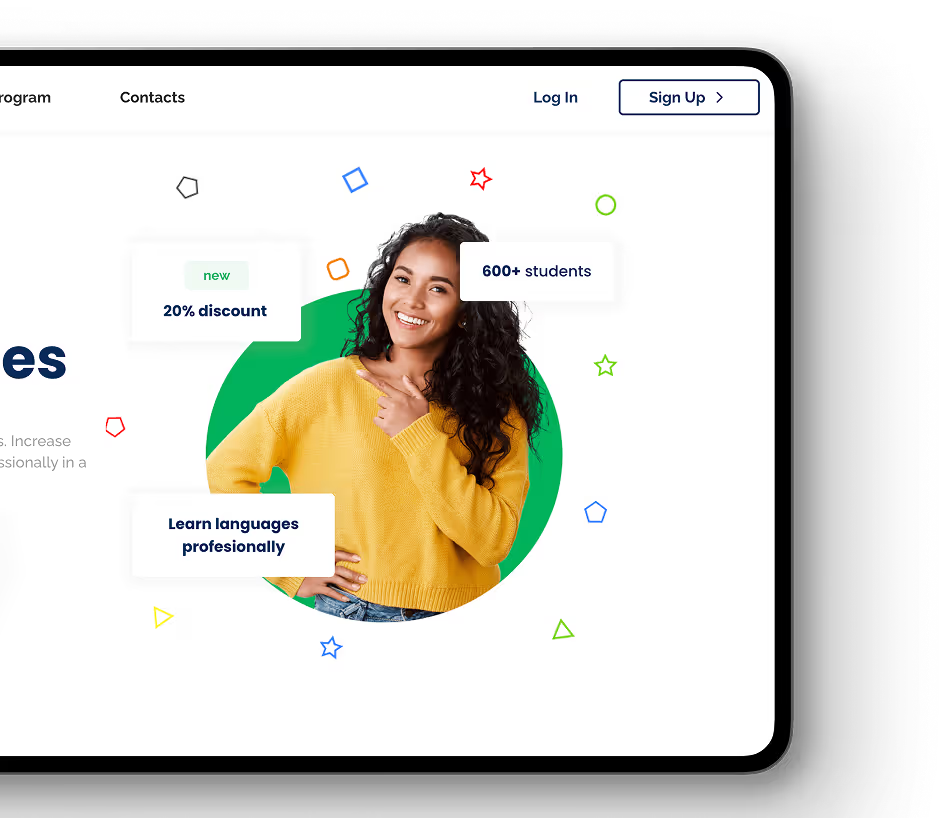February 29, 2024
•
6
min read
No Code Revolution: Building Powerful Backends Without the Hassle
Find out what no code revolution is and how to build powerful backends without the hassle. Check out now!

The no-code revolution marks a transformative shift in software development, particularly in backend development. It’s introduced platforms and tools that empower individuals to construct intricate backends without coding. With this new accessibility, just about anyone with an interest can build applications, automate workflows, and manage data.
The significance of this revolution lies in its potential to foster innovation and diversity in the tech landscape. It also promises faster development cycles through streamlined interfaces and pre-built functionalities, expediting prototyping and iterations for quicker time-to-market.
Already, businesses have seen the benefits of using no-code backend web apps. In a consensus taken in 2021, businesses were reporting a 58% increase in revenue due to the implementation of no-code backend development.
Evolution of Backend Development
So how far have we come with coding? To truly understand the significance of the No-code backend revolution, let's briefly explore the evolution of backend development:
- Early days 1942-1956: The creation of complex development languages and intricate server configurations made backend development accessible only to highly skilled programmers.
- The release of Microsoft Excel 1985: Surprisingly, the first no-code platform was Microsoft Excel. Spreadsheets are the foundation on which this transformative technology was revolutionized.
- Frameworks and libraries: The emergence of frameworks and libraries in the mid-2000s simplified coding and standardized processes, lowering the barrier to entry for developers.
- No Code Platforms first launched in 2006: The evolution – no code platforms such as Formstack and Shopify – eliminates the need for coding, offering visual interfaces and pre-built modules for building powerful backends.
- Backend-as-a-service (BaaS): With its first iterations dating from 2011, BaaS platforms like Bubble provided basic backend infrastructure as a service, further reducing the complexity for developers.
Understanding No Code
The no-code backend approach to software development has empowered individuals with little to no coding experience to build functional backends using visual interfaces and pre-built functionalities. Instead of writing lines of code, users can drag and drop modules, connect data sources, and configure logic through point-and-click features. Think of it as a building with pre-fabricated blocks instead of bricks and mortar. This makes complex backend tasks accessible to non-technical users, citizen developers, and even smaller startups.
Advantages Over Traditional Backend Development
The development of no-code backends continues to offer accessibility by removing the need for coding expertise, thus opening doors for a wider range of people to develop applications. No-code backend’s drag-and-drop interfaces and pre-built functionalities have enabled rapid prototyping and iteration, accelerating development cycles. There’s no need for expensive coding resources with no code, so this causes a reduction in development costs and makes it viable for smaller businesses and individuals. Businesses were reporting a 53% reduction in development costs in 2021.
Due to visual interfaces and flexible configurations, no-code backend development has paved the way for easier modification collaboration. Adapting applications to meet the new standard has created mass collaboration, especially between technical and non-technical stakeholders.
Common Misconceptions
Because of the accessibility of no-code backend web app building, there have been several concerns. Let’s lay some of the more common misconceptions to rest.
- No-Code vs. Low-Code: Although similar, low-code backend platforms require some basic coding knowledge, while no-code backend platforms typically do not.
- Limited capabilities: No-code backend platforms can handle a wide range of functionalities, but complex enterprise-level applications still require traditional development.
- Replacing Programmers: No-code backend empowers citizen developers and automates basic tasks, but skilled programmers remain crucial for complex logic and integrations.
- Security concerns: No-code platforms offer strong security features and adhere to industry standards, but vigilance will always be necessary.
Since 2020 Rapid Dev has been offering low-code and no-code backend development through Bubble to help businesses grow. We’ve built web and we are also experts in mobile apps development with high-impact features that deliver results. We aim to help you on your journey through scalable no-code solutions.
Key Components of No Code Backend
No-code backend tools collectively empower users to create powerful and functional backend systems without the need for traditional coding. With a user-friendly environment that fosters rapid development, collaboration across teams, and the ability to bring ideas to fruition, there’s no need for extensive technical expertise.
Visual Interface
The Visual Interface is the central element of the No-code backend revolution. It replaces traditional code editors with an intuitive and user-friendly graphical representation. Users can construct backends effortlessly by employing drag-and-drop functionality for pre-built modules, connectors, and logic blocks. This visual approach represents the backend structure and flow, eliminating the need to interpret complex code. More importantly, the visual Interface enhances accessibility for non-technical users, breaking down coding barriers and allowing anyone to actively engage in backend development.
Data Modeling
Data Modeling in no-code facilitates user-friendly data management by allowing users to create and manage databases without the need for writing complex SQL queries. Through visual data modeling, users can define data structures, relationships, and fields using intuitive tools such as diagrams and tables. The no-code backend platforms also offer options for different data types (text, numbers, dates, etc.) and enforce data validation rules. This ensures the ongoing integrity of the data. Furthermore, no-code backend platforms typically support seamless integration with external databases, APIs, and cloud services, which serves to enhance flexibility and connectivity with external data sources.
Logic and Workflow Automation
Logic and workflow automation in no-code backend development empowers users to construct app functionality without coding as it utilizes visual tools and pre-built functions instead. The no-code backend platforms offer a variety of building blocks for implementing complex features such as conditional logic, decision trees, and calculations. Additionally, users can automate repetitive tasks, email notifications, data processing, and various workflows. This allows for the streamlining of processes and efficiency. These no-code backend platforms also facilitate integration with third-party services like email providers, payment gateways, and social media platforms to enhance the overall functionality and connectivity of the automated workflows.
Now imagine what a business can achieve with a team of experts who understand the software development process, on their side. With Rapid Dev, you can experience it for yourself! We’ll outline a comprehensive plan, provide you with a timeline, and then offer you a project estimate so you know what to expect. Do you want to enhance your business with Bubble?
Book A Free Consultation Today!
Real-world Applications
The versatility of no-code backend development can be observed across diverse industries. Whether in e-commerce, project management, or content management, No-code backend platforms make it easier while reducing development time and allowing for greater flexibility and innovation.
E-commerce
E-commerce, no-code backend platforms provide comprehensive solutions for building online stores. They feature pre-built functionalities for tasks such as setting up product catalogs, managing inventory, processing orders, and seamlessly integrating with payment gateways. These platforms also enable the customization of shopping experiences through drag-and-drop interfaces, allowing the creation of personalized user interfaces, loyalty programs, and coupon systems.
E-commerce websites like LightForce Technology were able to leverage user-friendly no-code tools for rapid prototyping and iteration as they are now even more accessible. Rapid Dev helps e-commerce businesses swiftly validate e-commerce concepts, experiment with various layouts, and gather user feedback before committing to more resource-intensive custom development. With our help, LightForce grew 6x over 8 months and was able to automate an enormous portion of their marketing and sales work.
Project Management
Project management is also more accessible due to no-code backend platforms. They facilitate the creation of project dashboards and task management systems without the need for complex coding. Users can easily track progress, assign tasks, and collaborate with team members all while automating workflows through intuitive visual tools. Additionally, these platforms support the visualization of project data and reports, and for generating Gantt charts, burndown charts, and other essential reports.
These help facilitate monitoring progress and making informed, data-driven decisions. When Kagent wanted to create a SaaS tool to help real estate agents accurately track and manage the information of their open-house visitors, they turned to Rapid Dev. Through the utilization of tools such as Jira and Figma, the collaboration between Kagent and Rapid Dev resulted in the successful realization of a SaaS application. This innovative solution is designed to create QR codes for vendors, seamlessly integrating with SMS and email campaigns.
This is a successful example of how no-code backend solutions in project management help to seamlessly integrate web apps with communication and collaboration tools. They provide centralized access to project information.
Read More About How Kagent Partnered With Rapid Dev to Streamline Open HOuses WIth QR Codes.
Content Management Systems
CMS or Content Management Systems (CMS) benefit from no-code backend platforms in the form of simplified solutions for building websites and landing pages. This is achieved through the provision of templates and tools for creating basic online structures featuring forms, blogs, and galleries. These platforms provide ease for managing website content and updates which then allows users to effortlessly edit text, images, and layouts without delving into code.
Because of no-code backend development, Higher Ground with the help of Rapid Dev was able to create CMS solutions to keep them in contact with their customers during the pandemic. The CMS enabled seamless integration with third-party services, they also enabled their website to connect to social media platforms, email marketing tools, and analytics services. This ultimately enhances the overall functionality and connectivity of CMS.
Find Out How You Too Can Build A CMS Platform With Rapid Dev!
Challenges and Limitations
While no-code backend platforms offer a wealth of possibilities, it's vital to acknowledge their limitations before diving in. Here's a deeper look at some challenges:
Scalability Concerns
Scalability concerns in no-code backend platforms revolve around performance limitations. These platforms are typically designed for smaller-scale applications thus potentially posing challenges when dealing with high traffic or complex data processing. This may necessitate a shift to traditional programming.
Vendor lock-in is another issue born out of scalability. It can lead to heavy reliance on a specific no-code platform and limit scalability options in the long run. This can make portability to other platforms or custom code challenging. Additionally, sometimes free and basic plans come with resource limitations such as restrictions on storage, bandwidth, or API calls. These may present scalability obstacles that require potentially incurring higher costs. In the end, no-code backend platforms might have limitations for high-traffic or complex applications.
Customization Constraints
While pre-built modules provide flexibility, highly customized workflows or unique features may demand traditional coding expertise. These customization constraints can limit the extent of customization achievable without coding. Even then templates and visual styles may not perfectly align with the desired branding or user experience. This highlights potential design constraints and the necessity for workarounds that could curtail creative freedom.
For developers who are accustomed to fine-grained control over backend aspects, no-code backend platforms may feel limited in code optimization and advanced server configurations. They may not provide the level of control typically available through traditional coding approaches.
Integration Challenges
Firstly, there may be limited API support for some no-code backend platforms when it comes to offering extensive integrations or custom API development options. This creates a challenge when trying to connect with legacy systems or specific third-party services. Additionally, data import and export limitations may arise. The constraints can appear when trying to import or export large datasets or specific data formats.
Security becomes even more crucial when integrating with external systems. The introduction of additional risks that require careful evaluation and implementation of effective mitigation strategies would be required to safeguard against potential vulnerabilities.
No Code vs. Traditional Backend: A Comparative Analysis
The choice between no-code and traditional backend development boils down to a balance between speed, cost, flexibility, and control. Let's compare!
Time-to-Market
No-code backend wins big here. Visual interfaces and pre-built modules significantly reduce development time while the rapid prototyping and iteration cycles facilitate faster deployment and testing. What’s the best part? The no-code backend requires minimal coding knowledge.
Typical traditional backend is slower due to complex coding, debugging, and testing processes. Because the traditional backend demands expertise in specific programming languages and frameworks, large projects can take months or even years to launch.
Cost Implications
No-code backend is often cheaper, especially for smaller projects. Some platforms even offer subscription models, eliminating the need for hiring large development teams. The traditional method of backend web app development, however, is more expensive due to programmer salaries, infrastructure costs, and potential project delays. Larger budgets are required for complex functionalities in traditional backend coding.
For rapid prototyping, MVPs, or simple applications, a no-code backend can be a cost-effective and efficient option.
Flexibility and Adaptability
Traditional web app development offers maximum flexibility and control. This is made possible by developers who can build bespoke functionalities and seamlessly integrate with any system. Adaptability is easier due to direct code manipulation.
On the other hand, no-code backend development is stuck within the platform's constraints. Pre-built modules and workflows provide some customization, but major changes might require switching platforms.
For complex functionalities, high-traffic projects, or maximum control, Traditional development remains the best approach. Hybrid solutions are also a possibility, combining the no-code backend for basic functions with traditional development for intricate features. But let our developers do the hard work for you!
Conclusion
Explore no-code backend for accessible yet creative ideas and innovation. As long as we continue to embrace the strengths of no-code backend and understand trade-offs for projects it can be very advantageous. This is just the beginning. The future of no-code backend development is bright and more will feel empowered to build, create, and solve problems without technical limitations. The global low-code and no-code development platform market is predicted to be worth $65 billion by 2027. Now is the right time to leverage this technology to work for you and drive effective results and higher ROI for your business with Rapid Dev.
Take the leap!
Ready to kickstart your app's development?
Connect with our team to book a free consultation. We’ll discuss your project and provide a custom quote at no cost!
Latest articles
We put the rapid in RapidDev
Ready to get started? Book a call with our team to schedule a free consultation. We’ll discuss your project and provide a custom quote at no cost!











